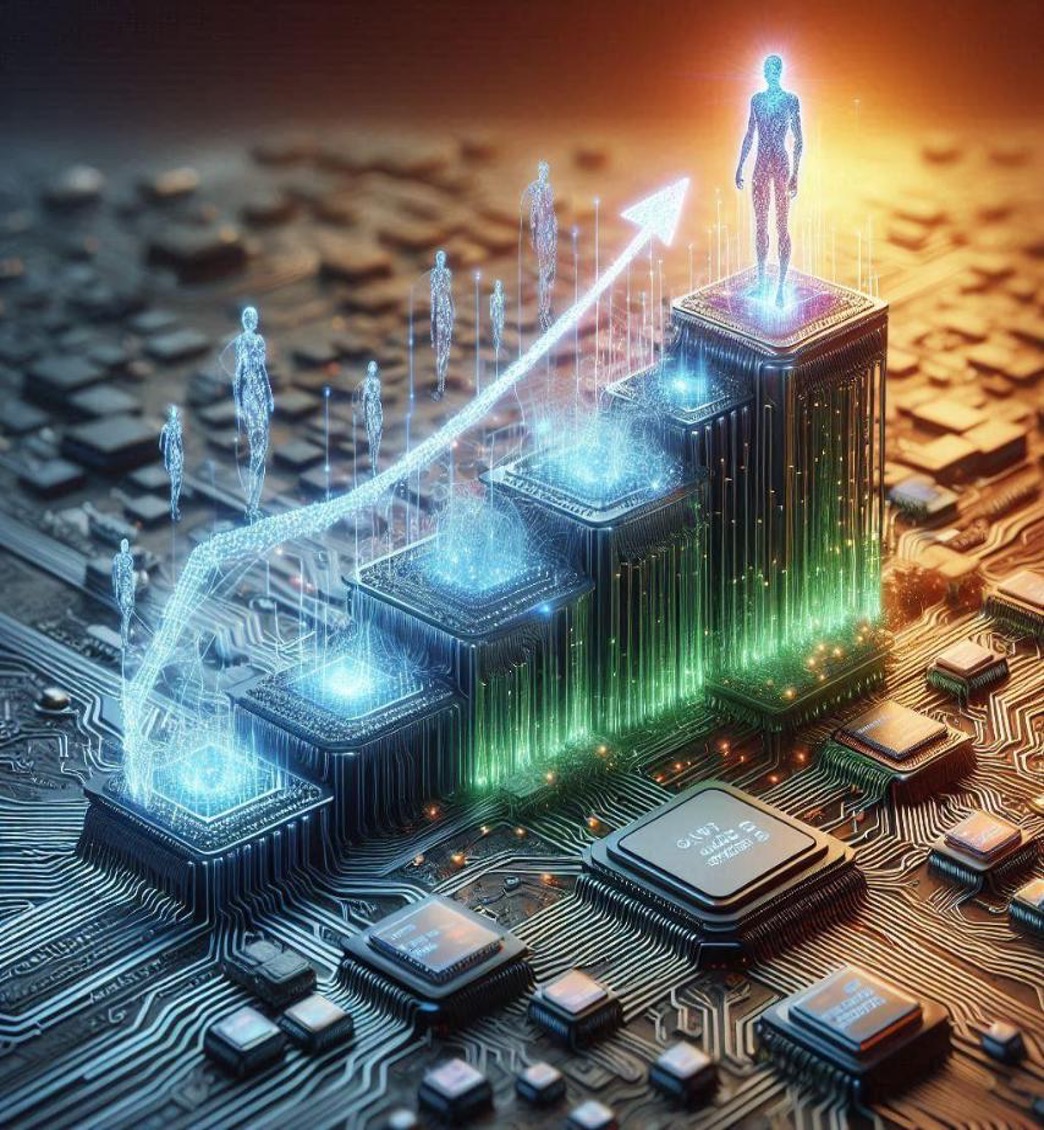Interplay of Hardware and AI :
Growth of AI capabilities with advancements in Hardware.

By: Saikat Paul | RIEPL
Introduction :
Over the past few decades, growth of AI capabilities has been remarkable, and it is fuelled by a combination of factors like algorithmic innovations, increased data availability, and significant hardware advancements. These growths have led to newer applications and transformations impacting various industries and aspects of life.
As AI continues to evolve, ongoing improvements in hardware will be essential to meet the increasing computational demands and to enable novel and more complex AI capabilities and hardware plays a critical role in the performance, efficiency, and scalability of AI systems. Future disruptions from newer hardware technologies can further accelerate AI processing, reduce energy consumption, and enable new applications. As these technologies mature, they will open up new possibilities and challenges, reshaping industries and society in profound ways.
In this article, we will focus on the interplay of hardware advancements and growth of AI capabilities.
Key Milestones: AI Capabilities
The growth of AI capabilities has been closely tied to advancements in hardware. From the early days of mainframes and microprocessors to the current era of specialized AI hardware and emerging technologies like quantum and neuromorphic computing, each leap in hardware capability has enabled new levels of AI performance and application.
In the past decade, some of the key milestones involved in majorly driving growth of AI:
-
- GPUs and the Deep Learning Boom (2000s-2010s)
- Graphics Processing Units (GPUs): Originally designed for rendering graphics, GPUs proved to be highly effective for the parallel processing required in deep learning. NVIDIA's CUDA platform (2006) allowed developers to harness GPU power for general-purpose computing.
- Deep Learning Frameworks: The development of frameworks like TensorFlow (2015) and PyTorch (2016) made it easier to leverage GPU power for training deep neural networks.
- Specialized AI Hardware (2010s - Present)
- Tensor Processing Units (TPUs): Google introduced TPUs in 2016, designed specifically for accelerating machine learning workloads. TPUs offer significant performance improvements over traditional CPUs and GPUs for certain AI tasks.
- Field-Programmable Gate Arrays Arrays provide customizable hardware acceleration, allowing for optimized performance in specific AI applications. Microsoft have integrated FPGAs into their data centres for AI workloads.
- Integration of AI with 5G Networks and Heterogeneous Computing Architectures ( 2020s - Present)
- The rollout of 5G networks and adoption of heterogeneous computing architectures have enabled real-time AI applications and optimized performance for diverse workloads, driving the next wave of AI growth. Heterogeneous computing architectures optimize performance and versatility for AI workloads, as exemplified by NVIDIA's DGX SuperPOD.
As these technologies continue to evolve, they will drive further breakthroughs in AI, opening up new possibilities and transforming industries.
Correlation: AI Capabilities and Hardware Advancements
The last decade has seen remarkable growth in AI accuracy, optimization, speed, and performance, driven by significant hardware advancements. The integration of GPUs, TPUs, advanced memory technologies like HBM and NVMe, and heterogeneous computing architectures has enabled the development of more accurate, efficient, and faster AI models.
Following are some of the rapid advancements highlighting more efficient AI systems with advancements in hardware:
- ImageNet Accuracy: Improved from 15.3% (AlexNet) to 2.2% (EfficientNet).
- Training Time: Reduced from several days (AlexNet) to 4 days (BERT) and several weeks for much larger
models (GPT-3). - Inference Speed: Improved from 29 ms/image (ResNet-50) to 5 ms/image (EfficientNet).
- Hardware Performance: Enhanced from 170 teraflops (DGX-1) to 5 petaflops (DGX A100).
- GPUs and the Deep Learning Boom (2000s-2010s)

Impact: GPUs on AI Capabilities
Over the past decade, the impact of GPUs on AI capabilities has been transformative, driving significant advancements across several core focus areas. Increased computational power of GPUs has enabled the training of larger and more complex models, leading to substantial improvements in accuracy for tasks. Optimization techniques have evolved to make better use of hardware resources, resulting in more efficient training and inference processes. Speedof AI computations has also dramatically increased, enabling real-time applications.Performance enhancements, including improved throughput and energy efficiency, has facilitated the handling of larger datasets and the training of more complex models.
Here’s a detailed analysis of the impact of modern GPUs:

Conclusion and What’s Ahead
The increase in transistor count, shrinking process nodes, and enhancements in memory and bandwidth have collectively contributed to the exponential growth in computational power. Significant hardware innovations, particularly in GPUs have revolutionized the field of artificial intelligence, enabling unprecedented improvements in accuracy, optimization, speed, and overall performance. The evolution from early GPUs like the NVIDIA GTX 580 to cutting-edge models such as the A100, H100 and the anticipated L40 and X40GPUs has facilitated the training and deployment of increasingly complex AI models.
This has allowed for the development of sophisticated models, setting benchmarks in image recognition, natural language processing, and other AI tasks. The reduction in training times and inference speeds, enabled by optimized hardware and algorithms, has made real-time AI applications feasible, transforming industries such as healthcare, autonomous driving, and smart cities.
Looking ahead, the future prospects for AI are incredibly promising. The introduction of GPUs like the H100 and X40, with their expected increases in transistor count and performance capabilities, will further push the boundaries of what AI can achieve. These advancements will enable the training of even larger and more complex models, improving accuracy and efficiency across various applications. The integration of advanced memory technologies and the continued evolution of heterogeneous computing architectures will enhance data handling and processing speeds, making AI systems more powerful and versatile.


Saikat Paul | RIEPL
August 01, 2024

